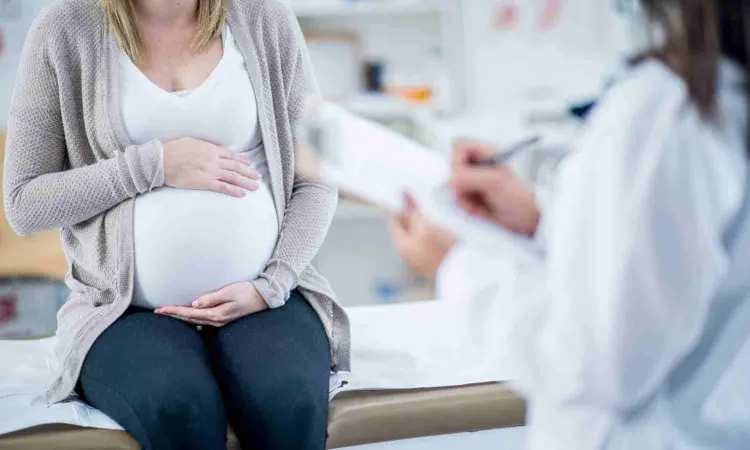- Home
- Medical news & Guidelines
- Anesthesiology
- Cardiology and CTVS
- Critical Care
- Dentistry
- Dermatology
- Diabetes and Endocrinology
- ENT
- Gastroenterology
- Medicine
- Nephrology
- Neurology
- Obstretics-Gynaecology
- Oncology
- Ophthalmology
- Orthopaedics
- Pediatrics-Neonatology
- Psychiatry
- Pulmonology
- Radiology
- Surgery
- Urology
- Laboratory Medicine
- Diet
- Nursing
- Paramedical
- Physiotherapy
- Health news
- Fact Check
- Bone Health Fact Check
- Brain Health Fact Check
- Cancer Related Fact Check
- Child Care Fact Check
- Dental and oral health fact check
- Diabetes and metabolic health fact check
- Diet and Nutrition Fact Check
- Eye and ENT Care Fact Check
- Fitness fact check
- Gut health fact check
- Heart health fact check
- Kidney health fact check
- Medical education fact check
- Men's health fact check
- Respiratory fact check
- Skin and hair care fact check
- Vaccine and Immunization fact check
- Women's health fact check
- AYUSH
- State News
- Andaman and Nicobar Islands
- Andhra Pradesh
- Arunachal Pradesh
- Assam
- Bihar
- Chandigarh
- Chattisgarh
- Dadra and Nagar Haveli
- Daman and Diu
- Delhi
- Goa
- Gujarat
- Haryana
- Himachal Pradesh
- Jammu & Kashmir
- Jharkhand
- Karnataka
- Kerala
- Ladakh
- Lakshadweep
- Madhya Pradesh
- Maharashtra
- Manipur
- Meghalaya
- Mizoram
- Nagaland
- Odisha
- Puducherry
- Punjab
- Rajasthan
- Sikkim
- Tamil Nadu
- Telangana
- Tripura
- Uttar Pradesh
- Uttrakhand
- West Bengal
- Medical Education
- Industry
High emergency care use during pregnancy associated with increased risk of Severe Maternal Morbidity ,finds study

Pregnant women who frequently seek emergency care during pregnancy may be at a higher risk of experiencing severe maternal morbidity and other negative outcomes. Recent cohort study explored the association between frequent unscheduled care visits during pregnancy Data Source and the risk of severe maternal morbidity (SMM) at the time of birth.
The study used data from the Massachusetts Pregnancy to Early Life Longitudinal (PELL) Data System, which links birth and fetal death records to corresponding maternal hospital encounters. The study population included 774,092 pregnant individuals in Massachusetts between October 1, 2002 and March 31, 2020. The key exposure was 4 or more emergency care visits, defined as either an emergency department (ED) visit or observational stay (OS) during pregnancy not resulting in hospital admission.
The main outcome was the odds ratio for SMM at the time of birth. Study Results - ContinuedThe results showed that 31.3% of the sample had at least 1 unscheduled visit during pregnancy, and 3.3% had 4 or more visits. High emergency care use was more common among younger individuals, those with Hispanic or non-Hispanic Black race/ethnicity, those with public insurance, and those with a comorbidity or opioid use in the year prior to pregnancy. Study Results - ContinuedIn the multivariable analysis, those with 4 or more unscheduled visits had an adjusted odds ratio of 1.46 (95% CI, 1.29-1.66) for SMM compared to those with 0 visits. Additionally, 43.8% of those with 4 or more unscheduled visits used multiple hospitals during pregnancy. The study concludes that high emergency care use during pregnancy is associated with an increased risk of SMM. Given the fragmentation in care for those with frequent unscheduled visits, the authors suggest that community-based and integrated solutions across health systems may be most beneficial for this high-risk population.
Key Points -
1. The study explored the association between frequent unscheduled care visits during pregnancy and the risk of severe maternal morbidity (SMM) at the time of birth.
2. The study used data from the Massachusetts Pregnancy to Early Life Longitudinal (PELL) Data System, which links birth and fetal death records to corresponding maternal hospital encounters. The study population included 774,092 pregnant individuals in Massachusetts between October 1, 2002 and March 31, 2020.
3. The key exposure was 4 or more emergency care visits, defined as either an emergency department (ED) visit or observational stay (OS) during pregnancy not resulting in hospital admission. The main outcome was the odds ratio for SMM at the time of birth.
4. The results showed that 31.3% of the sample had at least 1 unscheduled visit during pregnancy, and 3.3% had 4 or more visits. High emergency care use was more common among younger individuals, those with Hispanic or non-Hispanic Black race/ethnicity, those with public insurance, and those with a comorbidity or opioid use in the year prior to pregnancy.
5. In the multivariable analysis, those with 4 or more unscheduled visits had an adjusted odds ratio of 1.46 (95% CI, 1.29-1.66) for SMM compared to those with 0 visits. Additionally, 43.8% of those with 4 or more unscheduled visits used multiple hospitals during pregnancy.
6. The study concludes that high emergency care use during pregnancy is associated with an increased risk of SMM, and suggests that community-based and integrated solutions across health systems may be most beneficial for this high-risk population.
Reference –Declercq ER, Liu CL, Cabral HJ, Amutah-Onukagha N, Diop H, Mehta PK. Emergency Care Use During Pregnancy and Severe Maternal Morbidity. JAMA Netw Open. 2024 Oct 1;7(10):e2439939. doi: 10.1001/jamanetworkopen.2024.39939. PMID: 39412800.
Dr Kamal Kant Kohli-MBBS, DTCD- a chest specialist with more than 30 years of practice and a flair for writing clinical articles, Dr Kamal Kant Kohli joined Medical Dialogues as a Chief Editor of Medical News. Besides writing articles, as an editor, he proofreads and verifies all the medical content published on Medical Dialogues including those coming from journals, studies,medical conferences,guidelines etc. Email: drkohli@medicaldialogues.in. Contact no. 011-43720751


